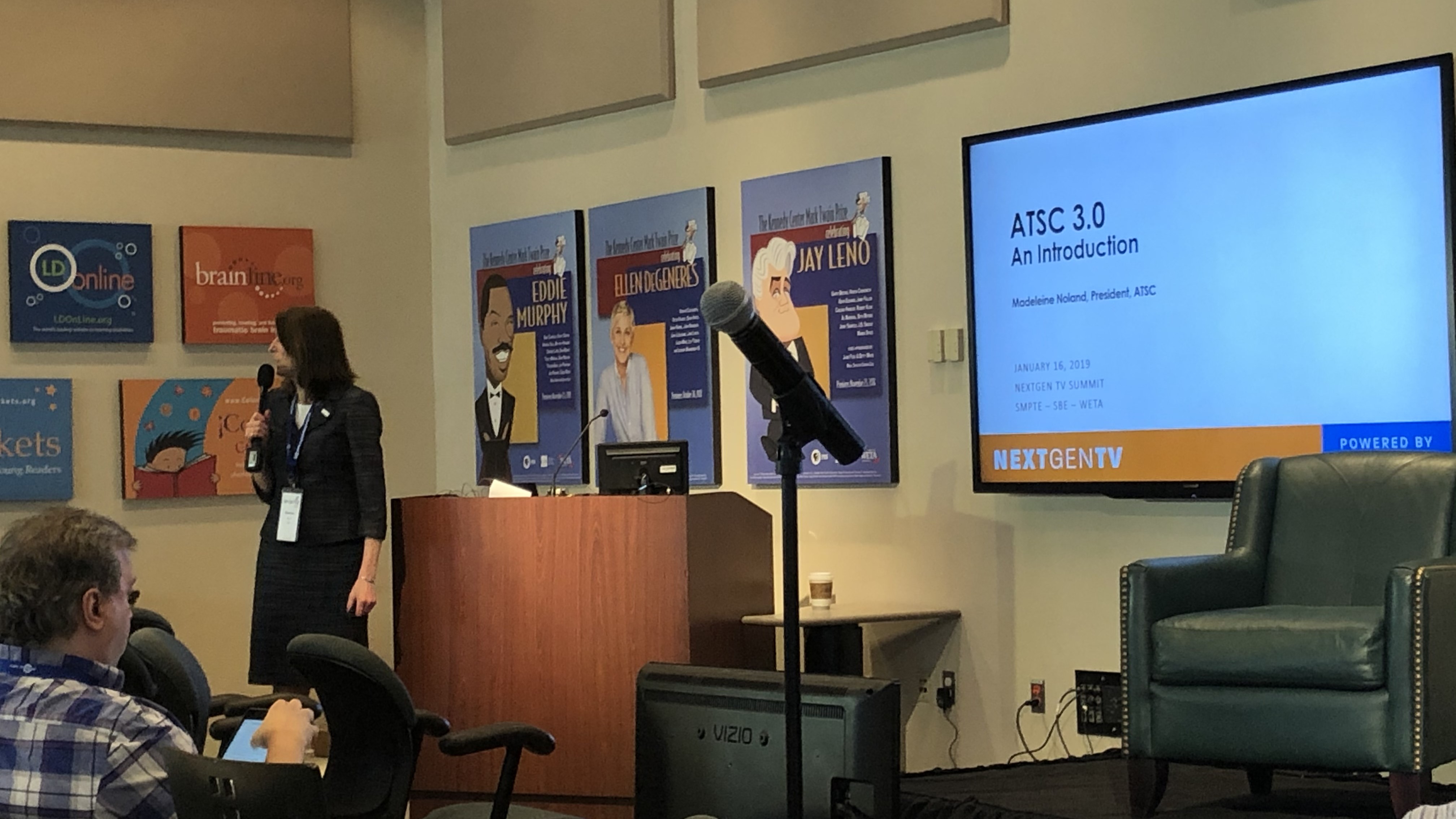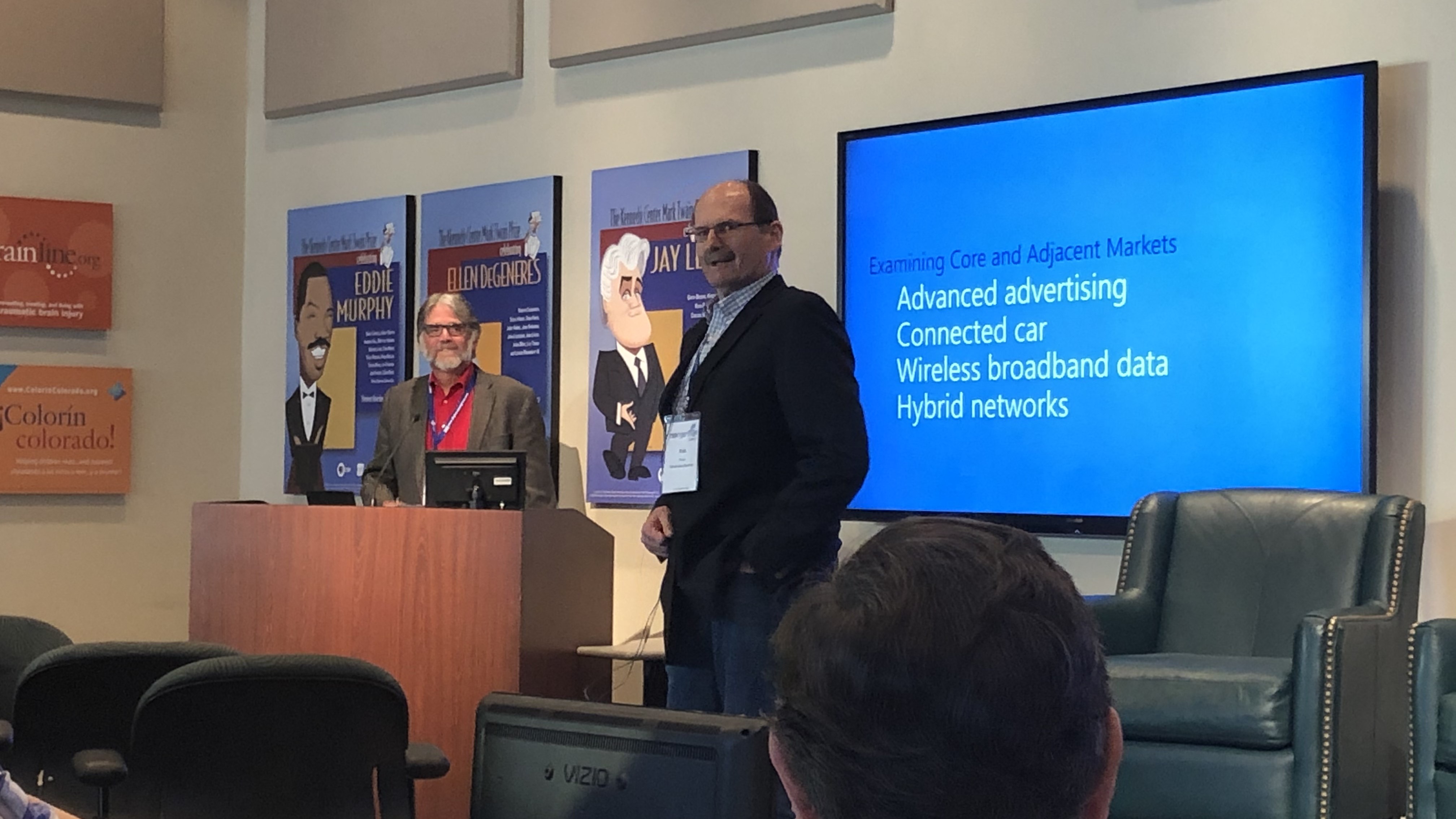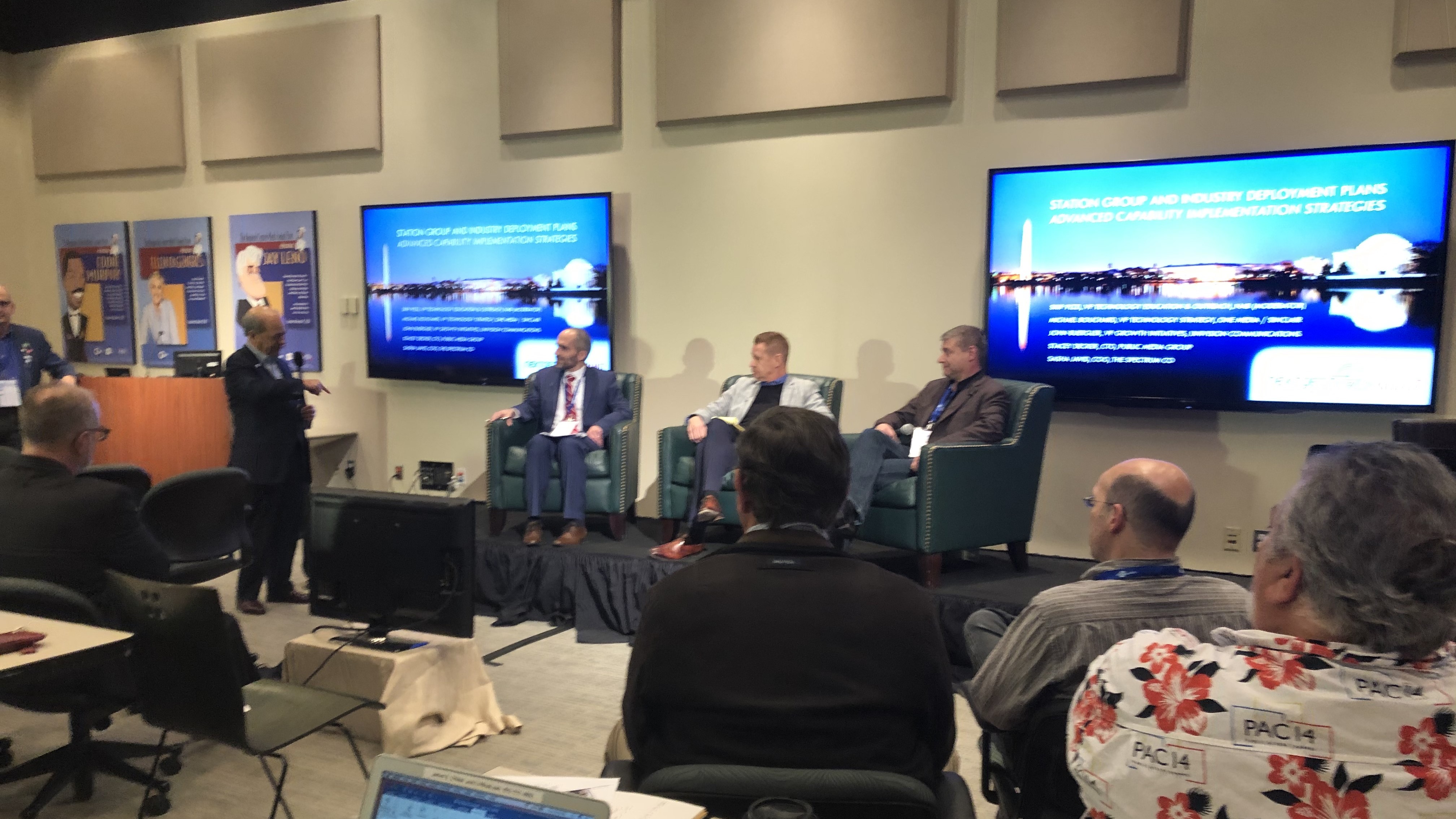NextGen TV: ‘This is Year One’
ARLINGTON, Va.—The standard has been approved, testing is ongoing and new TV sets with support for NextGen TV (aka ATSC 3.0) debuted at CES2020 earlier this month. Now comes the hard part—marketing it.
That was among the chief topics at SMPTE’s NextGen TV Summit hosted by WETA last week. A standing-room-only crowd discussed the technology, marketing and business opportunities broadcasters could harness with the new over-the-air broadcasting standard. And one of the first steps is branding.
“We don’t talk about ATSC 3.0 anymore,” said Lynn Claudy, senior vice president of technology for NAB and chairman of the ATSC board of directors; “now we talk about NextGen TV.”
KEEP UP WITH THE JONESES

In a quickly evolving mobile, digital world, broadcasters have to assert themselves once again if consumers are to embrace the new standard, Claudy added.
“There’s a lot of competition and disruption; you have to ‘keep up with the Joneses’ in digital media,” Claudy said. Referring to the IP component with NextGen TV that allows broadcasters to provide OTT-type services, Claudy said, “We have to be seamlessly integrated into existing online broadband ecosystem in a meaningful way.”
With increased demand on spectrum, “the pressure is on broadcasters to be more efficient,” Claudy added. “You’ve got to do more with less.”
Get the TV Tech Newsletter
The professional video industry's #1 source for news, trends and product and tech information. Sign up below.
Claudy’s opening comments were echoed by ATSC President Madeleine Noland.
“The cellular industry is ravenous for spectrum,” she said. “And the way to defend your spectrum is to use it well. And I think the ATSC 3.0 standard is going to help broadcasters make their stake in the ground very strongly with, ‘hey, our spectrum is being used extremely wisely for the betterment of the people and the economy.’”
One of the most significant differences between ATSC 1.0 and 3.0 is the latter standard’s emphasis on mobility, which was driven home by Mark Aitken, senior vice president of technology for Sinclair.
“[With ATSC 1.0], we lost consumers because we had an opportunity to be the mobile leader and we didn't choose that path,” Aitken said. “And if we forget that this time around, we might as well put the gun to our head right now.”
In 2017, Sinclair offered to give away 1 million NextGen TV tuners to any cellphone makers willing to add the capability to their devices. While there have not been reportedly any takers, Sinclair has showcased a NextGen TV chip it has developed in conjunction with Saankhya Labs, VeriSilicon and Samsung Foundry, and Aitken hinted that there will be new developments to see at the NAB Show in April.
“Don’t be surprised if you see a smartphone with a NextGen TV chipset at NAB,” Aitken predicted.
SINGLE FREQUENCY NETWORKS
Broadcasters are currently petitioning the FCC to revise the commission’s standards to allow the increased use of multiple transmitter deployments to make NextGen TV signals cut down on multipath, making the broadcast signal more robust in the mobile environment. These “single frequency networks” could be the key to consumer adoption, according to attendees.
“SFNs let you extend your coverage into shadow areas,” Noland said, adding that an SFN in San Francisco, for example, could increase audience reach up to 40%.
SFNs also represent an opportunity for broadcasters in one market to cooperate on deploying and enhancing NextGen TV coverage, according to Jeff Andrew of Osborn Engineering.
“We believe that SFNs should be co-located—all the stations in one particular market should all be on the same SFN sites, sharing the same infrastructure,” Andrew said. “Pick your channel assignments that support SFN deployment.”
NextGen TV also allows for enhanced graphics and geo-targeted emergency alerts through its AWARN platform. With broadcasters often serving as the primary source of information, this could enhance even more broadcasters’ roles during emergencies.
“Wireless companies are not overly eager about wireless alerts,” Noland said. “They don’t want to accept responsibility for the message that goes out. The broadcast community cares about such messages and enhances such messages. Broadcasters are content creators, not just content distributors, which differentiates us from the 5G community.”
John McCoskey, CEO of SpectraRep, mentioned that the industry needs to create a consistent look when it comes to providing enhanced emergency alerts.
“We are looking at approaches that will provide a similar look across all channels,” adding that “there is a fair amount of interest among broadcasters about how to tie emergency alerts into the news workflow.”
THE ELEPHANT IN THE ROOM
NextGen TV is not being deployed in a vacuum however. 5G was described as “the elephant in the room” at the conference, but NextGen TV advocates emphasized the differences between a broadcast one-to-many service and cellular one-to-one.
Acknowledging the hype around the next-generation cellular standard now being rolled out in selected areas, Josh Arensberg with Verizon Media reminded attendees that “5G is an enabler, a last mile provider, just like ATSC 3.0,” but that as content creators, broadcasters can better enable programming and information tailored to the benefits provided by broadcast.
“Without content and people creating experiences, there’s nothing,” he said. But because higher resolution content comes with a bigger data appetite, “you can see a $500 bill within minutes with up to 10 Gbps downloads [in 5G],” adding that when it comes to efficiency in a mobile device, when compared to “cost per bit,” 5G is up to “90% less efficient.”
“[NextGen TV] can contribute to a very efficient battery life,” Arensberg added.
CONTENT IS NO LONGER ‘KING’

When it comes to business opportunities for NextGen TV, Mark Fratrik, senior economist with BIA took issue with the traditional “content is king” mantra.
“Platforms and devices drive the business models more than the content,” he said. “It’s hard to think that content is king; Roku, for example doesn’t create content, but Wall Street loves them. For incremental growth, it’s platforms and devices that drive the growth today.”
Fratrik and his colleague Rick Ducey unveiled the results of their study that estimates that broadcasters could grow revenue 50% over the next 10 years as they deploy ATSC 3.0. Nevertheless, the ATSC 1.0 signal will continue to be the main source of revenue over the next decade, they said.
“Even with the new capabilities NextGen TV provides, traditional linear TV advertising and retransmission will continue to account for the lion’s share of revenues throughout the 2020s,” Fratrik said.
A CLEAR MESSAGE

With deployments under way and sets scheduled to hit retail by the 2020 holiday shopping season, marketing NextGen TV will probably be the biggest challenge for broadcasters in 2020. Skip Pizzi, vice president of technology education and outreach for NAB, advised caution when promoting a product and service that can’t be accessed by consumers yet.
“You don't want to push too hard on the consumer side if there isn't yet a product that they can use,” he said. “You have to be careful and clear on the messaging.”
For those consumers who have heard about NextGen TV, the main takeaway has been that it will allow for 4K resolution and enhanced audio. And for South Korea, which has gotten a headstart on deploying ATSC 3.0, 4K has been described as the “killer app.”
That country in fact, is already planning on shutting down ATSC 1.0 before the end of the decade according to Claudy. “They have already planned their shutoff of ATSC 1.0 in 2027,” he said. “All HD content will be gone in favor of 4K by then.” But he also reminded attendees that that country’s transition to ATSC 3.0 was mandated by the government. “Korean broadcasters also got more spectrum for the transition,” Claudy said.
In the early stages of the deployment in the U.S., Claudy believes broadcasters will opt for 1080p resolution with HDR and HFR (in certain situations) and just offer 4K on “special occasions.” But by combining over-the-air broadcasting with IP, the capabilities are so much more than that, according to Stacey Decker, CTO of Public Media Group, who reminded attendees that it’s not just NextGen TV, but other advances such as the cloud, AI and software-defined networking that is revolutionizing broadcasting.
“We're at a unique time in our history with regard to technology disruption,” he said. “We now have the opportunity to take the infrastructure we've all known for years and deploy these things on top of it and make it powerful.”
For a comprehensive source of TV Technology’s NextGen TV coverage, see our NextGen TV silo.
Tom has covered the broadcast technology market for the past 25 years, including three years handling member communications for the National Association of Broadcasters followed by a year as editor of Video Technology News and DTV Business executive newsletters for Phillips Publishing. In 1999 he launched digitalbroadcasting.com for internet B2B portal Verticalnet. He is also a charter member of the CTA's Academy of Digital TV Pioneers. Since 2001, he has been editor-in-chief of TV Tech (www.tvtech.com), the leading source of news and information on broadcast and related media technology and is a frequent contributor and moderator to the brand’s Tech Leadership events.

